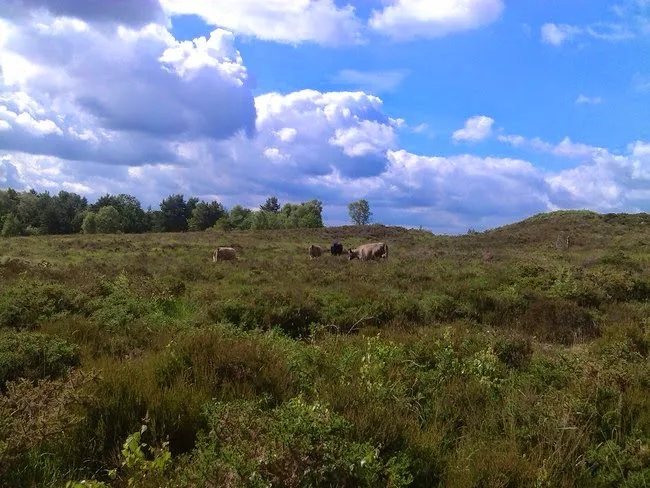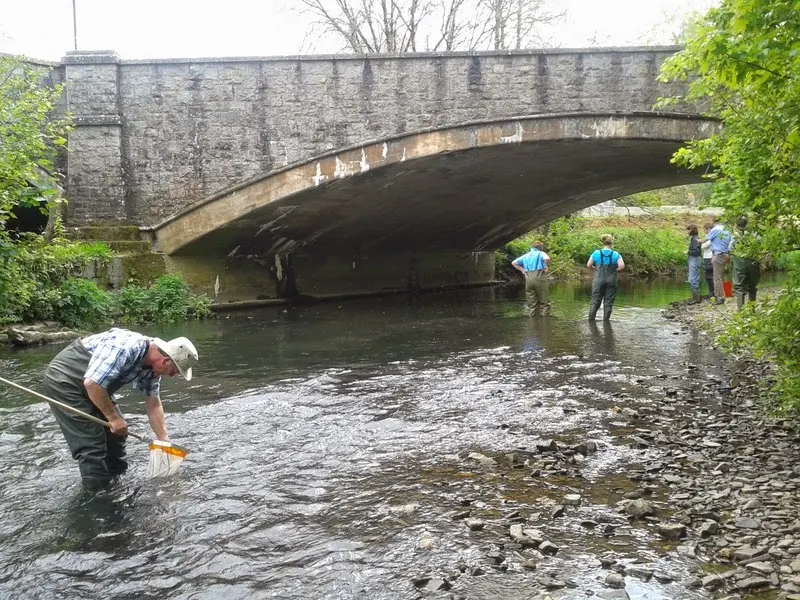For the first time in many years cattle are roaming the heathland landscape of one
of south Devon's top nature reserves.
Bovey Heathfield Nature Reserve, close to Bovey Tracey, is now home to six Galloway
cattle. The job of the cows will be to munch their way through the some of the
grasses, brambles and scrub that threaten to take over some areas of the delicate
heathland. When the cattle are removed later this year it is hoped that they will
leave the nature reserve in a better state to help rare wildlife including reptiles,
birds, butterflies and wildflowers.
Bovey Heathfield Nature Reserve is managed by leading environmental charity Devon
Wildlife Trust. Its Nature Reserves officer Jackie Gage said: "This heath would once
have been grazed by cattle belonging to local people. This grazing helped to keep it
in balance, allowing its unique heathland wildlife to thrive. However these old ways
of land management largely ceased in the first half of the 20th century and many
heathlands were lost as a result of this. After a break of many years, introducing
grazing animals means that Bovey Heathfield should now remain as a wonderful place
for wildlife and people."
The nature reserve needed investment before it cattle could roam again. Large parts
of the 24 hectare site's perimeter had to be improved with stock-proof fencing. The
cost of this was significant but Devon Wildlife Trust was able to do the vital work
using a generous grant from Biffa Award, a multi-million pound fund that helps to
build communities and transform lives through awarding grants to community and
environmental projects across the UK.
Jackie explained the difference that cattle will make to the nature reserve's
wildlife: "The cattle will feed on some of the young scrubby bushes, brambles and
trees that could otherwise easily smother the delicate heathland. They also munch
through a lot of the dead purple moor grass that will also dominate if unchecked.
This process of clearing is vital for a whole range of heathland specialist plants
and animals that call the nature reserve their home.'
Among the plants which are set to do well from the cows stay are wildflowers
including heath milkwort, tormentil and lousewort. Birds set to prosper include
stonechats and nightjars. While the cattle will also create bare spots in the heath
for reptiles including common lizards, adders and grass snakes to bask in.
The cattle should not put people off visiting this popular nature reserve which sits
as a green oasis on the edge of the busy Heathfield industrial estate. Jackie added:
'The cattle are calm animals but we do ask people to be sensible around them. In
particular that means keeping all dogs on a short lead. That way the cows can get on
with their vital job of work keeping the reserve in good shape for local wildlife.'
Bovey Heathfield is one of 50 nature reserves managed for people and nature by the
charity Devon Wildlife Trust.
'Cattle are once again roaming the heathland
of Bovey Heathfield Nature Reserve. near Bovey Tracey' Photo copyright DWT (All rights reserved)


